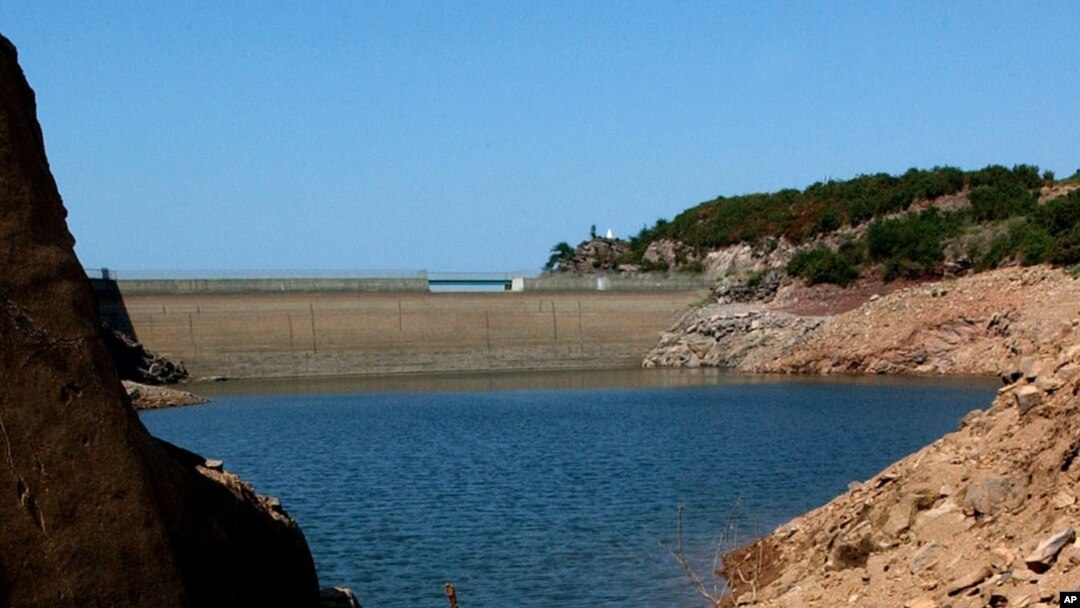The severe heat wave gripping India is the second deadliest the country has experienced and the fifth deadliest in the world.
The death toll across the county is topping 2,000, and there are rising calls for authorities to put in place more measures to cope with extreme temperatures.
Scattered rain brought relief to a handful of places from scorching temperatures that have persisted for nearly two weeks across much of India. But across vast swathes of India, the heat showed no sign of letting up.
A Brussels-based disaster center, the Emergency Events Database, called it the world’s fifth-deadliest heat wave.
Chandra Bhushan, deputy director of the New Delhi-based Center for Science and Environment, said although India is used to coping with high temperatures, the summer heat has turned deadlier as temperatures increase more rapidly.
“Generally there is a slow ramp up of temperature ... but that did not happen. We had an unusually cold and wet March and April and then from the first week of May, the temperature suddenly started to increase and the ramp up was very, very fast," Bhushan explained. "What it means is in a very short period of time, the temperature increased by close to 15 to 20 degrees [Celsius].”
In the worst-affected states such as Andhra Pradesh, authorities issued advisories for people to stay in the shade.

An Indian drinks water from a bottle on a hot summer day in Allahabad, India, Sunday, May 31, 2015.
Poor people worst affected
But it was advice many poor people, such as construction labor, hawkers and vendors, dependant on daily wages, could not afford to heed. The plight of those in crowded cities was worsened as a lack of tree cover and paved surfaces drove temperatures higher. In many places, temperatures have hovered around 45 degrees Celsius.
R.S. Deshpande at the Indian Institute of Social Science Research said as with most other disasters, poor people are the worst hit. They do not have access to homes with protective roofs or the right clothing to help cope with the weather.
Deshpande said the economic costs of such a heat wave can be crippling for poor people. “Their income takes a dip, the health hazards are more, and the expenditure on health increases, expenditures on other items increases, like they have to buy fruit. Usually in the summer there is no other work also, as far as their living condition are concerned they take a dip in summer,” Deshpande said.
Experts point out that although heat waves are now listed as a “disaster,” little has been done to cope with them on the same "war footing" as cyclones and earthquakes.
But as the killer heat wave persists across large parts of the country, calls for authorities to do more to prepare for such extreme weather are becoming louder.
A girl cools off herself in the waters of the river Ganges during a hot summer morning in Allahabad, India, May 31, 2015.
Heat Action Plan
So far only one Indian city, Ahmedabad in the western Gujarat state, has put in place a “Heat Action Plan” to protect its residents. The many measures include public and community awareness campaigns, setting up cooling spaces in malls and other public buildings, training doctors and alerting supervisors at construction sites on how to protect laborers.
Dileep Mavalankar is director of Ahmedabad’s “Heat Action Plan”, which he said was modelled after one put in place in Europe following a killer heat wave in 2003.
He said the action plan has shown results: it helped reduce mortality during a major heat wave that hit the city for a few days last June.“That time the mortality instead of reaching 300 per day, it reached to 180 in one day. So the peak mortality during heat wave is reduced at least in Ahmedabad. It seems the peak mortality which we saw in 2010 is much, much, much reduced,” he said.
Mavalankar said that the response to a workshop they held in April to promote similar plans for authorities from other cities was lukewarm. Several states did not send representatives, and only two states showed interest in adopting a similar plan.
The recent heat wave, however, could put more pressure on authorities to draw up contingency plans to cope with extreme weather, which climate experts warn could become more frequent in future.
Better forecasting
Chandra Bhushan at the Center of Science and Environment calls for better forecasting systems and other measures to alleviate the impact of extreme temperatures.
“If a warning is announced, that all the manual work is stopped for a certain period of time, say for example between 11 am and 4 pm, people are out allowed to work in fields and outdoors," said Bhushan. "Second concern is, we will have to upgrade our public infrastructure much more for heat waves, whether it is about providing water at public places, having dehydration salts at public places, much more alert health care systems.”
But even as experts worry about the future, most Indians are simply longing for a break from the heat. For the time being, all hopes are pinned on the annual monsoon rains, which usually hit the southern coast by this time, and which weather officials say could arrive any day.


